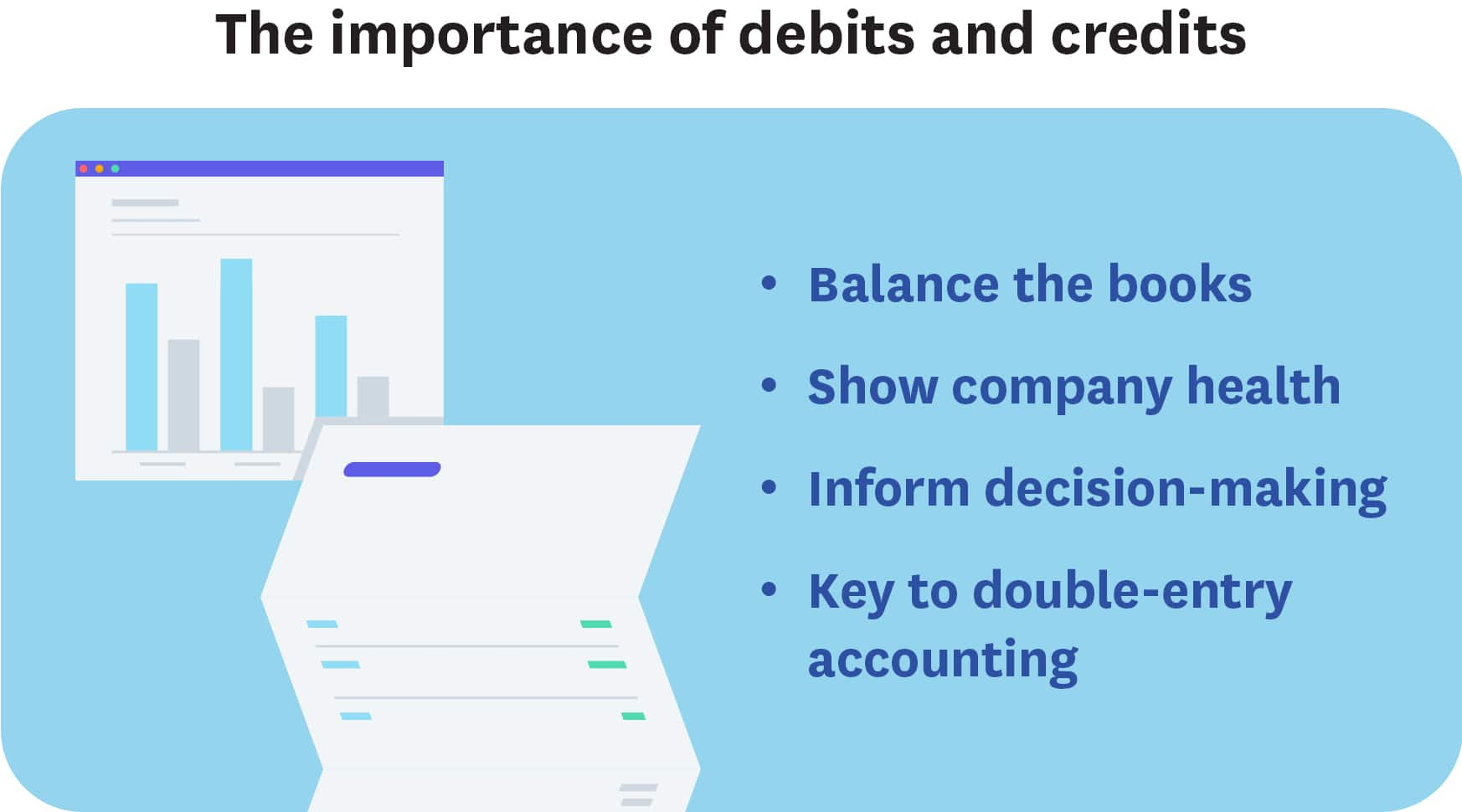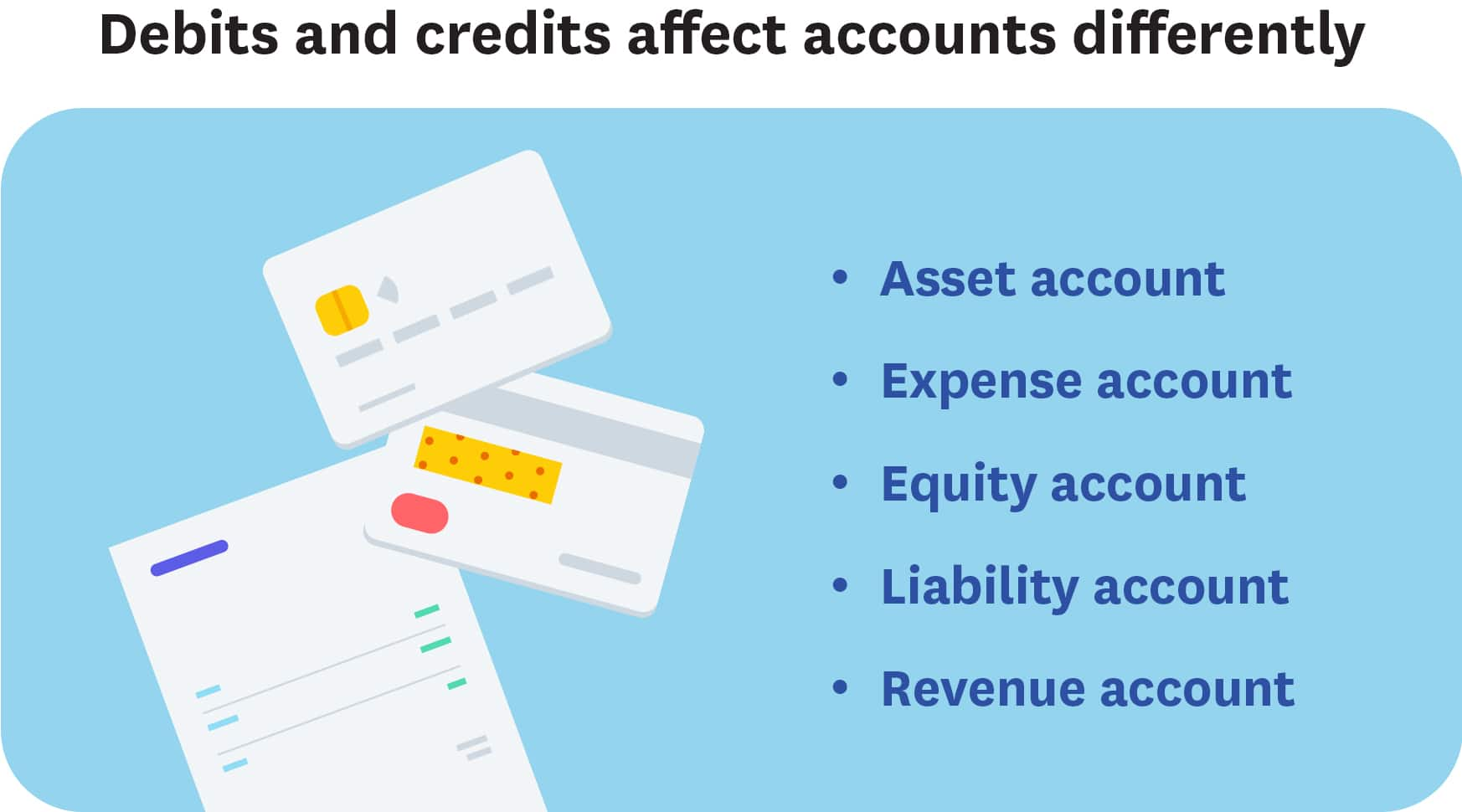What are debits and credits in accounting and how to calculate them
Understanding debits and credits is key to knowing the financial health of your business.

Published Wednesday 13 September 2023
Defining debits vs credits
In bookkeeping, we use a general ledger to record all financial transactions in a business. We also use double-entry bookkeeping, which means that every entry has a debit and a credit;
- Debits document transactions going into an account. They are recorded on the left side of the general ledger.
- Credits document transactions going out of an account. They are recorded on the right side of the general ledger.
The importance of debits and credits
The key to debits and credits is having them match so that they balance your books. Debits are money coming into your company, and credits are money going out of your company.
This information may also be used by lenders for bank loans, by the Internal Revenue Agency (IRS) for taxes, and by investors to check the health of a business.

Debits and credits are the key to the double-entry accounting system. For it to work, you must have a debit and a credit for each transaction. If there isn’t, your books will be a mess, and none of your financial statements will be accurate.
Five types of accounts and how debits and credits affect them

In your general ledger, there are five main accounts small business owners should know. These accounts are records of business transactions used to organize the records systematically. Some of these accounts also have sub-accounts to further organize the records. The sub-accounts allow you to track your records more accurately to gain a detailed understanding of where your money is really going or coming from.
The five accounts you need to know are:
- Revenue account
Asset account
Assets in a business are anything that adds value to your business. They can be physical, such as a company car or a computer, and non-physical, such as a trademark.
You can add sub-accounts to help organize your asset account. Some common sub-accounts for assets include:
- Petty cash account
- Inventory account
The most important thing to know about the asset account is that a debit increases an asset account, and a credit decreases an asset account.
Expense account
Expenses are the cost of doing business. Every business has them. They include expenses such as wages of employees, office supplies, advertising, and rent.
To further organize your expenses, you should create relevant sub-accounts for your business. Some common examples include:
- Insurance expenses
- Payroll expenses
- Rent
- Office expenses
When entering records into the double ledger, a debit increases an expense account, and a credit decreases it.
Equity account
Equity refers to the net worth of a business. This is calculated by your total assets minus your liabilities. Examples of equity include the owner’s equity, stock, and bonds.
Your equity account can be further organized into sub-accounts. Some common ones include:
When recording transactions in your books, a debit decreases an equity account, and a credit increases it.
Liability account
Liabilities in a business are the expenses that you owe but have not yet paid. Examples include sales tax you have collected and payroll tax.
You can further organize your liability account into sub-accounts. Some common sub-accounts include:
- Collected sales tax
- Payroll tax
When you record the transactions in a general ledger, a debit decreases a liability account, and a credit decreases it.
Revenue account
Your revenue account is all of the income that your business earns. Examples include sales revenue, earnings from investments, and cost of goods sold.
Having sub-accounts for your revenue account can be very important to help track where your main income is coming from. You can sometimes have sub-accounts of sub-accounts to really organize your accounts. These should be tailored to your business needs. Examples of common sub-accounts include:
- Investments
- Product sales: Online sales
- Product sales: Store sales
When recording transactions in your general ledger, a debit decreases a revenue account, and credit increases a revenue account.
Rules you need to know
There are some rules to know and understand to calculate your debits and credits for your financial statements. These rules don’t vary:
- Debits must equal credits. In a double-entry bookkeeping system, this is essential for balancing your books.
- Debits are always on the left, and credits are always on the right.
- Debits increase assets and expense accounts. Credits are the opposite and decrease them.
- Credits increase liability, revenue, and equity accounts. Debits are the opposite and decrease them.
- Credits and debits have opposite effects and must equal each other in the corresponding account. For example, every debit has a corresponding credit and vice versa.
Calculating the balance
All your financial transactions are recorded in your general ledger using the double-entry system. The general ledger is often called a T-account because it looks like a letter T shape. The account title goes at the top, debit entries are on the left, and credit entries are on the right.
The key to a balance sheet is that both sides are equal. Once you have determined if a debit or a credit increases or decreases the ledger, then you work out the balance for each account and confirm the final total.
If both sides don’t balance, there is a mistake. It is important to go back and find the mistake to keep your accounts accurate.
Managing your accounting
To keep your bookkeeping and accounts accurate, small business owners have several options:
- You can use a CPA, accountant, or a bookkeeper to balance the books. Using a professional will take the pain from trying to do them yourself.
- You can also use accounting software such as Xero, as it’s automated and will find the corresponding credits or debits to simplify your bookkeeping.
Disclaimer
Xero does not provide accounting, tax, business or legal advice. This guide has been provided for information purposes only. You should consult your own professional advisors for advice directly relating to your business or before taking action in relation to any of the content provided.
Start using Xero for free
Access Xero features for 30 days, then decide which plan best suits your business.